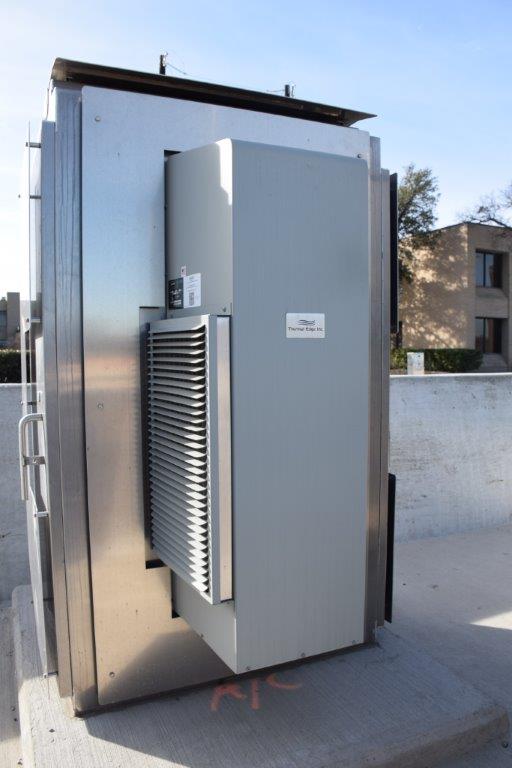4 Types of Heat Transfer Mechanisms for Cooling Electrical Enclosures
 Cooling an electrical enclosure involves processes for transferring heat from inside the enclosure and discharging it to the surrounding air. Various heat transfer mechanisms exist, including convection, conduction, thermal radiation, and evaporative cooling.
Cooling an electrical enclosure involves processes for transferring heat from inside the enclosure and discharging it to the surrounding air. Various heat transfer mechanisms exist, including convection, conduction, thermal radiation, and evaporative cooling.
Types of Heat Transfer Mechanisms
Enclosure cooling involves a combination of heat transfer mechanisms. The primary mechanisms used for cooling electrical enclosures are as follows:
- Conduction: This is the transfer of heat through a solid. For example, heat generated inside an enclosure is transferred to the outer surface by means of conduction.
- Convection: Convection is the transfer of heat from a surface by means of a fluid such as air. Natural convection occurs as air is heated: it expands, rises, and is replaced by cooler air. The amount of convection may be increased by using a fan to increase the flow of air.
- Radiation: This is a process where energy is radiated through the air by means of electromagnetic radiation. Although effective for high temperature sources such as the sun, it’s less effective at ambient temperatures on earth.
- Evaporation: The latent heat of a fluid can be used to transfer heat by absorbing the energy required to evaporate that fluid. The heat absorbed is released by allowing the fluid to condense outside the enclosure.
These types of heat transfer mechanisms are used to cool electrical enclosures in several ways. Here are some examples:
Passive Cooling
Passive cooling is the reliance on natural conduction, convection and radiation. This method is suitable for lightly loaded enclosures that have relatively large surface areas and good ventilation. The ambient air temperature must be lower than the enclosure temperature. This method is not suitable for temperature-sensitive components in high ambient temperatures.
Forced Ventilation
The effectiveness of convection can be increased by the use of fans that increase the flow of air through the enclosure. Cool air is drawn into the bottom of the enclosure and hot air discharged at the top. Fans should be fitted with filters to limit the ingress of dirt that could harm components. To ensure the electrical components do not get too hot, the ambient temperature must be well below the maximum desired enclosure temperature.
Heat Pipe Technology
Heat pipes, first developed in the 1960s, are an almost energy-free method of enclosure cooling. A heat pipe consists of an evacuated copper tube partially filled with a fluid such as alcohol or water. Due to the low pressure, the fluid at the bottom of the pipe boils when it absorbs heat from the air inside an enclosure. The vapor rises to the top of the tube, where it is cooled by the air outside the enclosure and condenses. The condensed fluid then returns to the bottom of the tube and the cycle repeats.
Thermal Edge’s Air-To-Air Heat Exchangers use this novel technique to cool sealed electrical enclosures. The only energy needed is for small fans to circulate air around the hot and cold ends of the heat pipe.
Enclosure Air Conditioning
Air conditioning also utilizes evaporation, but in a slightly different way. A refrigerant liquid, under pressure, is passed through an expansion device. The drop in pressure causes the liquid to evaporate in the air conditioner’s evaporator coil and absorb heat, cooling the air inside an enclosure. The hot gas is then compressed and passed through a condenser coil, where the gas liquefies, giving up its heat to the air outside the enclosure. An enclosure air conditioner represents an extremely effective method of cooling an enclosure and will work efficiently even if the ambient temperature is much higher than the enclosure’s air temperature.
To learn more about Thermal Edge’s products and how to select the appropriate method of cooling for your electrical enclosure, contact our sales team today.
